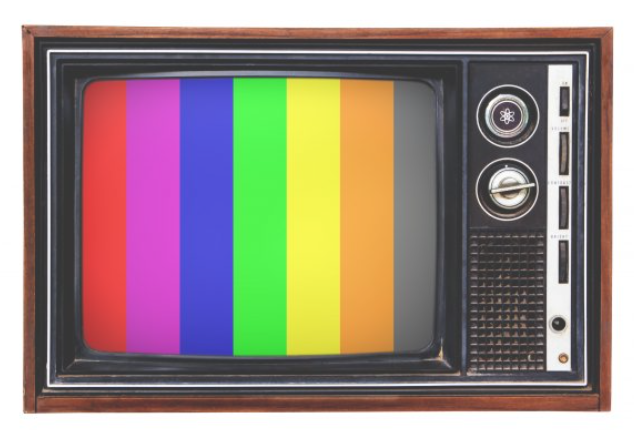The color television (or color TV) is an appliance that many of us take for granted. Whether it’s to catch up on the news, watch our favorite sports broadcast, or binge on our favorite streaming shows, the TV is a big part of our lives. We mean, it’s too ordinary that we don’t even think about who exactly invented it! Now, who invented the color TV seems like a story worth tuning in.
Television Itself Has a Complicated History
The interesting thing is that it’s not easy to trace who exactly invented color television. In fact, it’s not even simple to determine who invented television as a whole. Of course, before there was color television, there was plain black-and-white television. It may be hard for today’s hip millennials and Gen Xs to believe that there once was a time when televisions did not display color.
People take it for granted today, but color in television was a big deal when it first appeared on TV screens. In fact, NBC’s iconic peacock logo was originally created as a marketing ploy to advertise the network’s color programming.
Samuel Morse and Alexander Graham Bell were among the first to conceive the idea of transmitting images via electrical means. If these names sound familiar, it’s because they were responsible for the telegraph and the telephone respectively. But they didn’t just envision sending messages. They imagined that one day, devices could transmit images as well.
Paul Nipkow built one of the earliest prototypes for television in 1884. He achieved the effect by building a machine with a rolling disc with holes, which would transmit images using a neon lamp. However, due to technological limitations, the invention was inefficient and was never mass-produced. Nevertheless, it would lay the groundwork for many developments in the years to come. In particular, he is credited for discovering the scanning effect that many later televisions would use.
Many Others Would Build on Nipkow’s Work
Later inventors, such as Karl Ferdinand Braun, John Logie Baird, and Philo Farnsworth, would improve on Nipkow’s work. Braun invented cathode ray tubes, which would form the basis for most televisions for decades. Baird was among the first to build a mechanical television that showed images, while Farnsworth was the first to actually transmit images. Because of the latter aspect, Farnsworth is often considered to be the father of television.
Credit for the Color TV Often Goes to a Scotsman
Speaking of John Logie Bard, in addition to building a mechanical television, he would go on to create a color TV as well. He started work on building a color TV soon after he found success with black-and-white television. As early as 1928, he was able to show his progress to interested crowds, but economic pressures limited his progress. By 1941, he was able to build a prototype that used a color wheel to add hues to images. Although color TV would not catch on until the 1960s, his system would form the basis for many appliances in the years to come.
But A Mexican May Have Invented It First
Although Bard’s work on color TV is more well-known, a Mexican inventor may have beaten him to punch. In 1940, Guillermo González Camarena created a color TV system called Trichromatic Sequential Field System. He patented his invention in 1942, and he continued to improve his technology up to 1958 when he would be able to modify his patent. Many others would take inspiration from his work in further refining color TV technology.
Others Had Even Earlier Patents
It’s worth noting that Bard and González weren’t the only ones working on a color TV. Polish inventor Jan Szczepanik built a prototype as early as 1897, although he was unable to turn his creation into a mass-produced product. Vladimir Zworykin, another claimant to the title of “Father of Television” (which he personally hated), patented a color system in 1925. Notably, Zworkyin worked for RCA, which would eventually come to help popularize color TV among the masses. While the original RCA company no longer exists, its legacy lives on in today’s NBC network. As mentioned earlier, NBC’s famous peacock logo was its way of showing off its color programming.
So Who Invented the Color TV?
The answer is that it’s not a single person, but a combination of many people from many backgrounds across multiple eras. Each inventor and engineer built on the work of their predecessors, and each iteration improved on prior efforts. We have a lot of people to thank, such as Zworykin, Bard, González, Braun, Nipkow, and more, for not only giving us our favorite way to binge our favorite shows but also for giving us more color in our lives.
